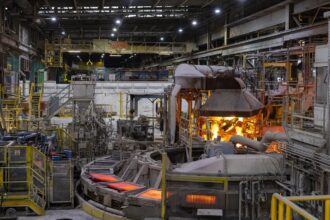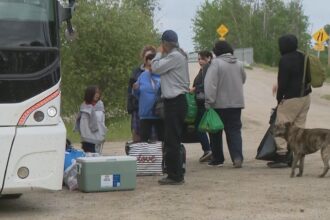In a significant pivot toward diversifying Alberta’s energy landscape, Premier Danielle Smith announced Tuesday that the province will launch public consultations this fall on incorporating nuclear power into its energy mix. This marks a potential watershed moment for a region traditionally defined by its oil and gas production, as Alberta explores sustainable alternatives while maintaining its energy-sector dominance.
“Nuclear energy represents a promising path forward for Alberta’s energy future,” Smith stated during a press conference in Edmonton. “These consultations will help us determine how small modular reactors and other nuclear technologies might complement our existing resources while addressing climate goals.”
The consultations, scheduled to begin in October, follow months of preliminary government research and come amid growing interest in nuclear energy across Canada. According to provincial officials, Albertans will have multiple channels to provide input, including town halls, online surveys, and dedicated information sessions in major urban centers and rural communities alike.
Energy Minister Brian Jean emphasized that nuclear development would supplement rather than replace traditional energy sectors. “This isn’t about choosing between oil and nuclear – it’s about strengthening Alberta’s position as an energy powerhouse through diversification,” Jean explained in a statement released by the Ministry of Energy.
The timing aligns with federal initiatives to reduce carbon emissions, as Canada pursues its net-zero targets by 2050. Small modular reactors (SMRs) – which can be manufactured at a plant, transported, and installed relatively quickly – feature prominently in the discussions. These scaled-down nuclear facilities require less capital investment than traditional nuclear plants and can provide power to remote communities or industrial operations.
Industry experts point to significant economic potential. A report from the Conference Board of Canada estimates that developing a robust nuclear sector could create up to 5,800 jobs annually in Alberta over the next decade and contribute approximately $5.3 billion to provincial GDP.
Environmental organizations have expressed mixed reactions. The Conservation Council of Alberta cautiously welcomed the consultations while emphasizing the need for thorough safety protocols and waste management solutions. “Nuclear energy presents complex tradeoffs that deserve careful public examination,” said Environmental Director Leah Thompson.
Meanwhile, neighboring Saskatchewan has already signaled interest in regional collaboration. Saskatchewan Premier Scott Moe recently noted that “a coordinated Prairie approach to nuclear development makes economic and practical sense,” suggesting potential interprovincial partnerships that could strengthen the Western Canadian energy corridor.
The consultations will explore several critical aspects of nuclear integration: potential locations for facilities, regulatory frameworks, waste management solutions, and investment models. Officials have indicated that Indigenous consultation will form a substantial component of the process, recognizing territorial rights and the importance of obtaining community consent.
Dr. Margaret Chen, nuclear policy expert at the University of Calgary, notes the significance of this development: “Alberta entering the nuclear conversation fundamentally reshapes the energy landscape in Western Canada. The province brings substantial expertise in large-scale energy project management that could accelerate nuclear adoption if public support materializes.”
Economic analysts from major Canadian financial institutions have highlighted that nuclear development could help Alberta attract international investment in an era increasingly focused on clean energy transitions. “We’re seeing global capital flows shifting toward jurisdictions with clear decarbonization strategies,” noted Raj Patel, senior economist at Royal Bank of Canada.
As Alberta prepares for these landmark consultations, the fundamental question remains: can a province built on fossil fuels successfully transition to a more diversified energy portfolio that includes nuclear power, and what might this mean for Canada’s broader climate and economic objectives?










